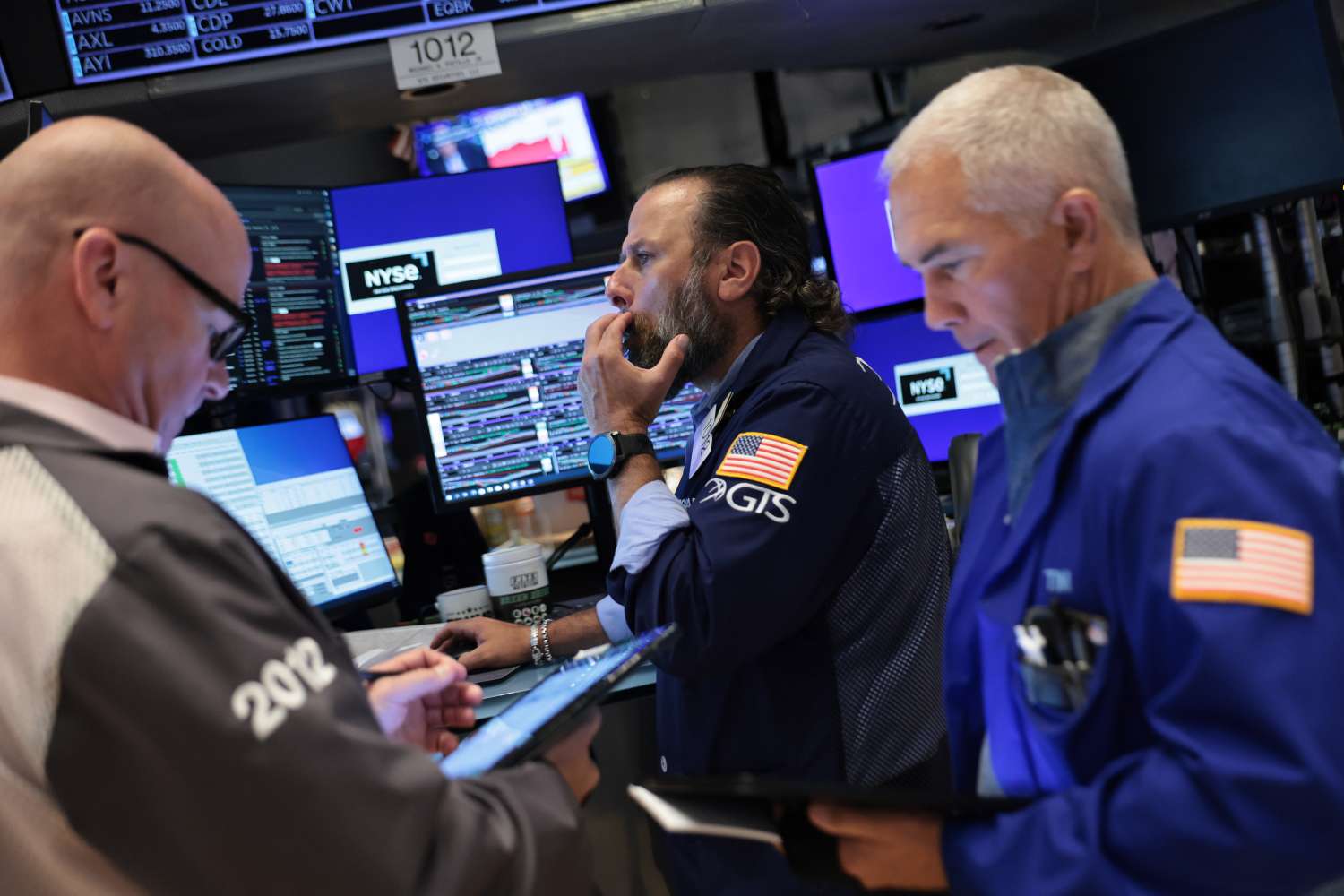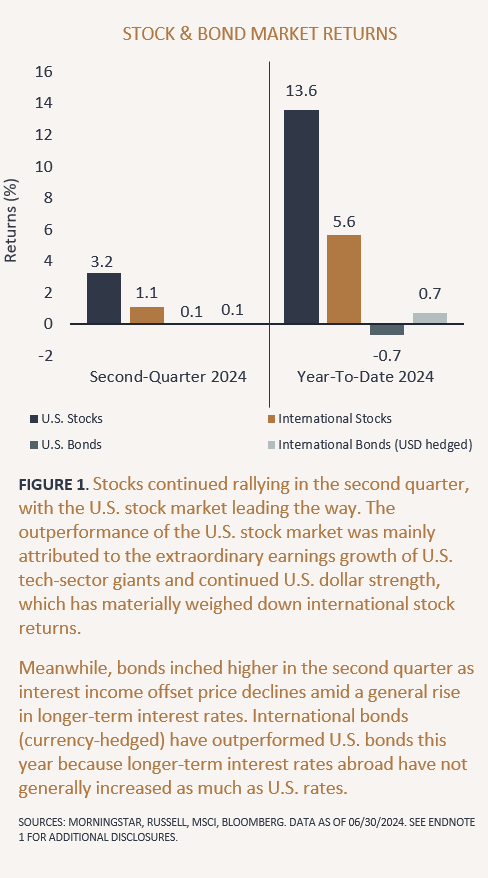An uneasy calm after the storm
On July 10, 2025, U.S. stock markets largely shrugged off a fresh wave of aggressive tariff threats from President Donald Trump. The Cboe Volatility Index (VIX)—Wall Street’s so‑called “fear gauge”—dropped to around 16, significantly below its long‑term average. This marked a notable decline from a trough near 52 in early April, when markets were roiled by Trump’s initial “Liberation Day” tariff announcement
Despite threats of 50% tariffs on copper, 200% levies on pharmaceuticals, and broader measures affecting over 20 countries, equity markets continued to surge. The S&P 500, Nasdaq Composite, and Dow Jones Industrial Average either plateaued at or reached new all‑time highs on that day. Analysts attribute this to growing skepticism among investors about the durability of Trump’s recent trade threats—he often backs off before implementation, thereby feeding into what is now known as the “TACO” trade: “Trump Always Chickens Out”
The rise and resilience of markets
Trump’s tariff escalation reignited fears last week when letters surfaced threatening new reciprocal tariffs—up to 40–70%—targeted at Japan, South Korea, Brazil, Thailand, and others, effective August 1 unless trade deals are brokered. Some measures included 25% duties on Brazil, alongside a steep 50% copper tariff, which pushed copper prices to new highs
Nevertheless, the reaction from equity markets was muted. Major U.S. indexes moved only modestly, or not at all; the median stock remains about 12% below its own 52‑week high. The rally is heavily skewed toward a handful of tech giants—Nvidia, Microsoft, Meta, Amazon, and Broadcom—which have driven more than half of the S&P 500’s 5.2% return in the past month
Notably, Nvidia surpassed a $4 trillion market value during this rally, emblematic of AI’s continued dominance in fueling investor optimism .
Why investors are staying calm
1. Familiarity breeds comfort
Since the April 2 “Liberation Day” tariffs, which triggered the worst U.S. stock market decline since 2020 and erased over $3 trillion in market value, volatility has systematically declined. Though the initial drop was brutal—S&P 500 plunged into bear-market territory—markets rebounded swiftly when Trump delayed tariffs just days later
Over time, investors have grown accustomed to Trump’s “escalate‑to‑de‑escalate” negotiating playbook—threaten big, pause later, and bring markets back. This expectation underlies much of the current calm .
2. The TACO trade prevails
The TACO phenomenon captures investors’ belief: Trump’s tariff threats ultimately reverse under pressure. Fund managers increasingly base decisions on previous patterns rather than headline threats alone, effectively pricing in the expectation of eventual walk‑backs
3. Selective market leadership
While tariffs remain present, sectors seen as resilient—especially tech/AI—continue to outperform. Defensive equity strategies and domestically focused service firms have attracted capital flows. At the same time, exposure to sectors vulnerable to global tariffs—like autos or long‑supply‑chain exporters—is being reduced Reuters.
Sizing up the risks
Corporate earnings under pressure
While equities appear unfazed for now, analysts warn that the tariff impact could erode corporate margins—especially for companies reliant on global trade. UBS notes that the effective U.S. tariff rate has risen to approximately 16% in 2025, up from 2.5% at the beginning of the year, and could shave 0.7 percentage points off GDP growth if maintained
Banks such as Citi and Deutsche have already downgraded earnings forecasts and expect continued volatility tied to tariff cycles and policy uncertainty
Vulnerable valuations and sentiment
With major stock indices reaching or exceeding historic levels, any misstep—such as delayed trade negotiations or unexpected retaliation from impacted countries—could trigger sharp reversals. Investors warn that the current calm reflects sentiment-driven rallies more than fundamentals-driven upside. RBC and Truist outline the risk that valuation-rich markets may stumble on execution disappointments
Macroeconomic headwinds
Elevated tariffs carry a lingering risk of inflation, as import costs may filter into consumer prices, reducing disposable income. Meanwhile, government fiscal constraints (like public debt above $36 trillion) limit the room for stimulus if trade shocks intensify. Analysts at BlackRock warn of potential stagflation—persistent inflation alongside sluggish growth—if tariffs remain at elevated levels for an extended period BlackRock.
Market metrics and technical signals
Volatility measures
– VIX fell back below 16, its historic median, reflecting investor optimism or complacency
– S&P 500 average daily range has narrowed to around 75 points over the past 10 sessions—about one‑third of the swing size seen in early April Reuters.
Technical indicators
– The S&P 500 has traded above its 200‑day moving average for several weeks, a bullish sign flagged by analysts like Adam Turnquist of LPL Financial. Additionally, the proportion of S&P stocks in uptrends rose from 29% at the April low to roughly 60% recently Reuters.
– Options sentiment has turned bullish, with 0.84 call options traded for each put, a ratio at its highest in four years Reuters.
Safe‑haven and currency flows
In the bond and currency markets, patterns reveal diverging sentiment. The U.S. dollar weakened roughly 6% year‑to‑date, while gold logged a 26% increase, highlighting a tilt toward risk‑off hedges even as equity volatility subsides .
What lies ahead: near‑term catalysts
Tariff deadlines and negotiations
A key date is August 1, when the next tranche of reciprocal tariffs is slated to take effect. Market participants are watching whether negotiations with countries like Japan and South Korea yield concessions—or if Trump delays again at the eleventh hour
Any indication of escalation—such as targeting new sectors or expanding countries—could revive volatility.
Earnings season and economic data
With Q2 corporate earnings season in sight, analysts believe companies’ ability to adapt—through pricing power, inventory management, and geographic diversification—will be tested. BlackRock stresses that businesses’ responses will be pivotal in assessing tariff effects on profitability Meanwhile, key macro prints—consumer credit, inflation, manufacturing indices—could reshape growth expectations and investor positioning.
Monetary policy expectations
Markets have priced in the possibility of Federal Reserve rate cuts in September, especially after stronger-than-expected labor data. Continued soft data coupled with stable inflation may propel rate cut optimism further, bolstering equities .
Investor strategies: balancing hope with caution
Analysts offer tactical guidance as investors navigate this landscape:
- Remain nimble and active. With policy headlines capable of triggering sharp swings, portfolio adaptability remains key. BlackRock and Invesco advise an active allocation shift toward defensively leaning sectors and tactical exposure to resilient plays .
- Hedge downside risk. Institutions are increasingly using safe-haven assets such as gold, short-dated Treasuries, and unhedged foreign equities to buffer potential shocks, per UBS research Barron’s.
- Focus on resilient sectors. While macro uncertainty remains, sectors led by AI, domestic services, and high‑quality dividend stocks remain preferred—while tariff‑sensitive sectors are de‑emphasized
Conclusion: cautious calm in a volatile chapter
Markets have shown remarkable composure this week in the face of renewed tariff threats. The VIX has receded, volatility metrics have normalized, and major indices are surging toward or beyond record highs. Investors appear to lean on three key beliefs:
- The TACO trade is real: Trump often backs off before damage sets in.
- Tech and AI momentum provide a strong tailwind.
- Creative policy and company-level buffers may ease impact in the near term.
However, risks remain very real. High valuations, uncertain negotiations, corporate margin pressures, and inflationary threats could upend sentiment abruptly. Analysts warn of a sentiment‑driven rally untethered from fundamentals. The ability to adapt—by selectively hedging and reallocating—may ultimately distinguish success from misstep.






Leave a Reply